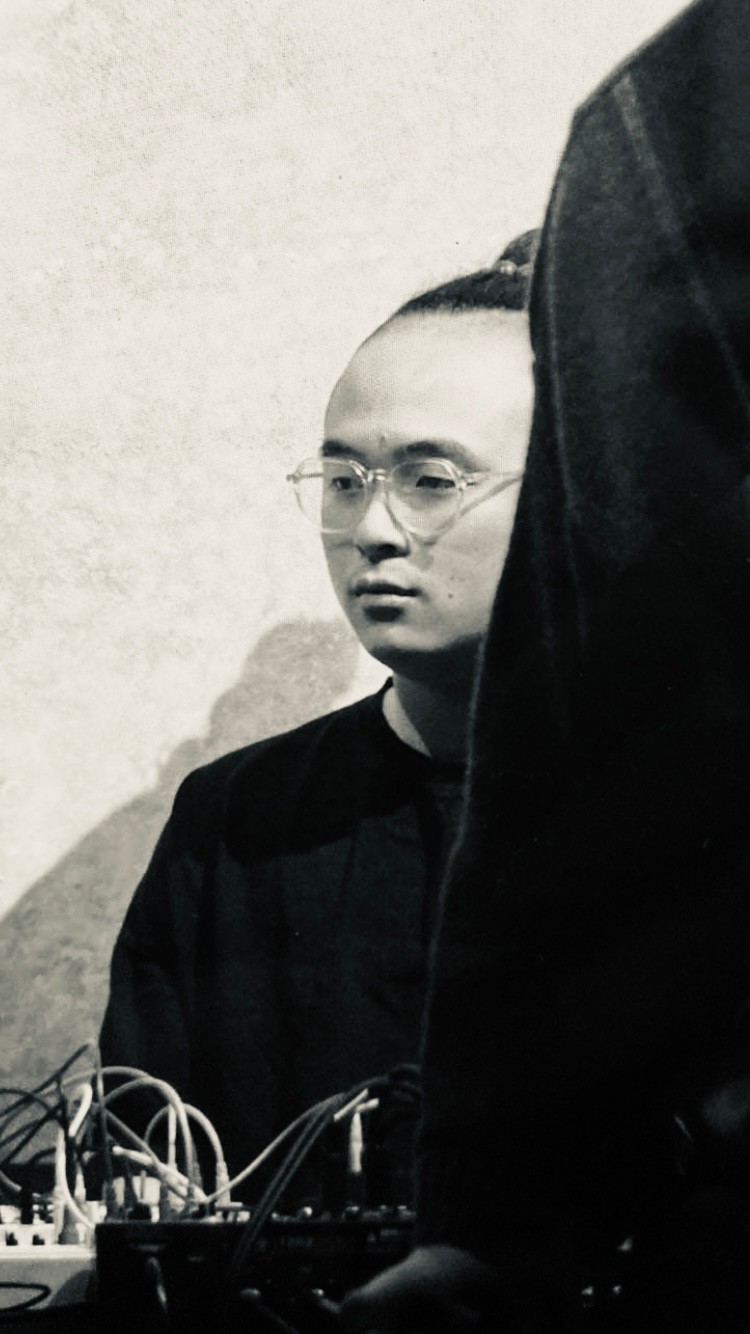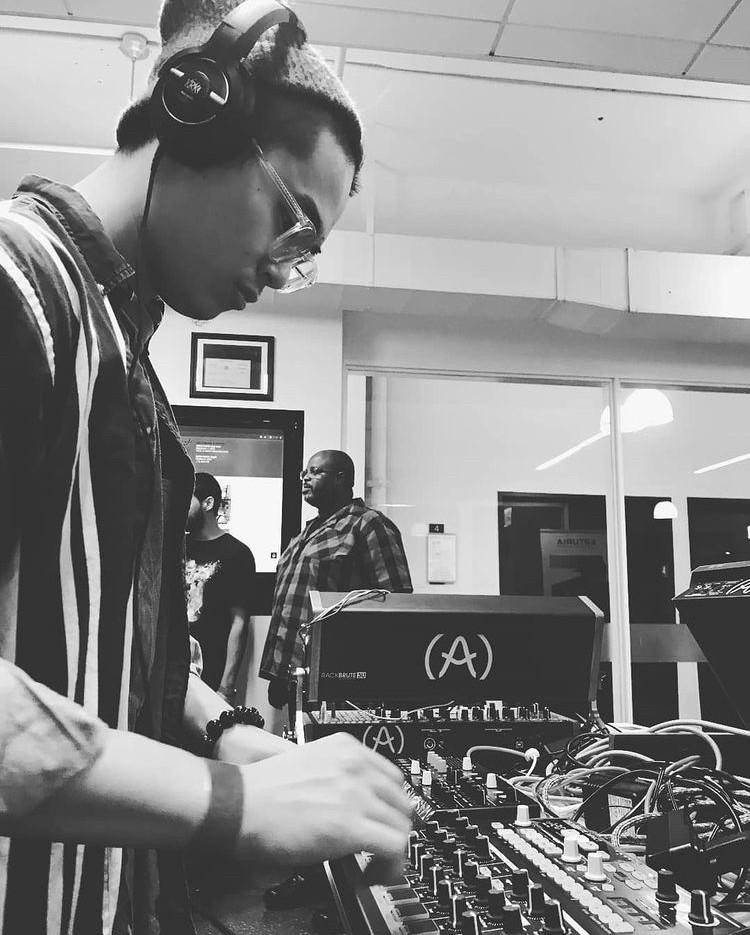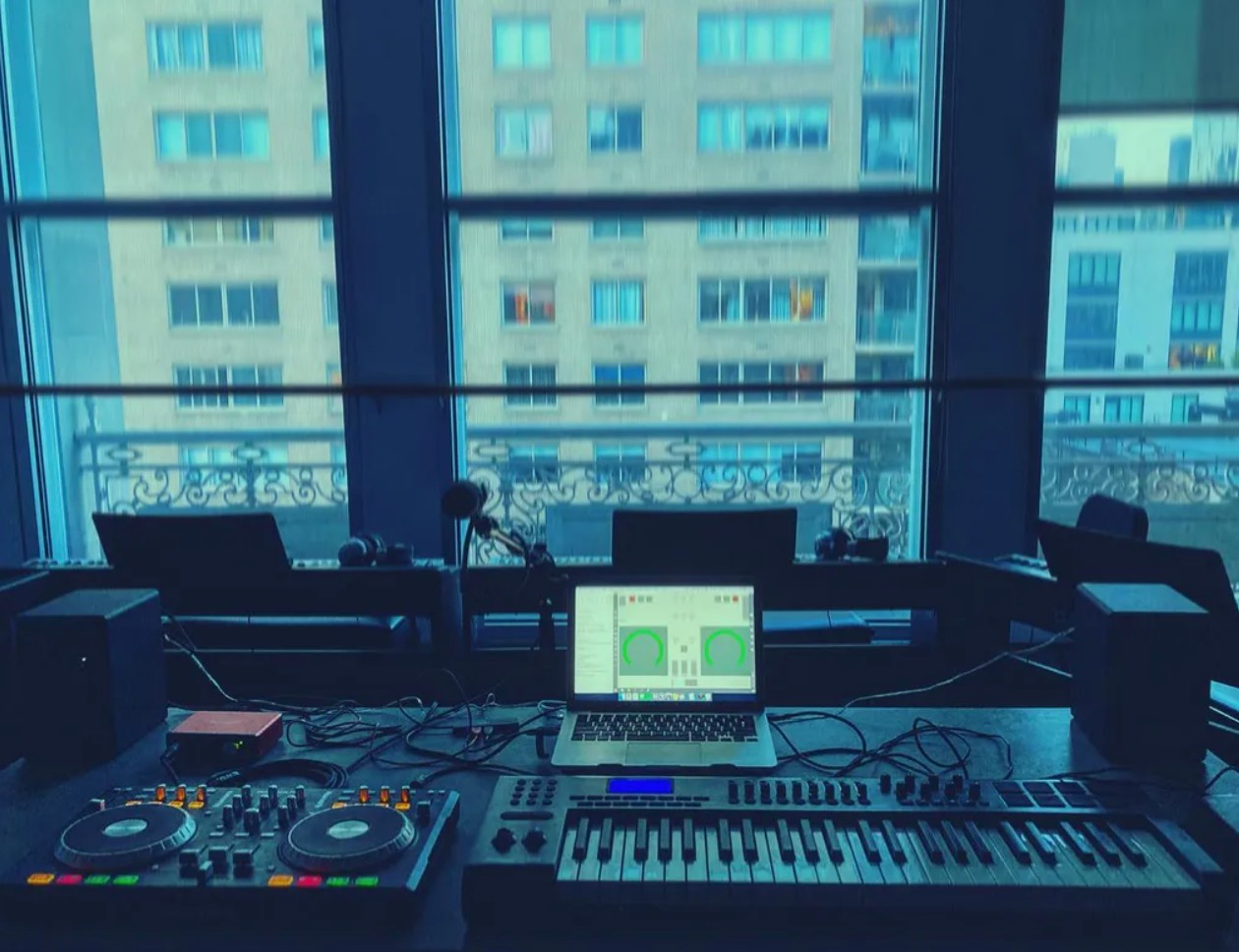We caught up with the brilliant and insightful Kaiwei a few weeks ago and have shared our conversation below.
Hi Kaiwei, thanks for joining us today. Learning the craft is often a unique journey from every creative – we’d love to hear about your journey and if knowing what you know now, you would have done anything differently to speed up the learning process.
As a modern-day music creator, working largely in contemporary and experimental capacities, every day I am in the scene and am part of this community is another day of acquiring new knowledge and experiences. My experience with creative music and electronic music was largely guided by my interests in unveiling uncommon sounds. Being intrigued by and revealed to the fundamentals of complex sounds and rhythms allowed me the widening of my vocabulary in composition, sound design, as well as my improvisation chops. Hence I believe curiosity has long been the inceptive element of any learning process, of any forms of craft.
Many of these sonic elements, those that gave rise to great senses of fascination and enigma, are now in retrospect reduced to mere sound waves through analysis, based of off our understanding in acoustics, and our learning in varying extended approaches of common musical instruments. What along the way came extremely handy, was the understanding of synthesis. The knowing of rudimental vibrational patterns of air particles, as well as manipulations of said patterns with predictable outcomes, provides us the necessary capability of identifying various unorthodox sounds. Eventually, the adding and subtracting of these patterns/sound waves, the manipulations on various parameters, the precise controls of frequencies and timbre, constitute to the greatest, the intricate, the most fundamental yet always overlooked compositional tool there is: sound design.
The understanding of basic acoustics has allowed me to shift much of my creative focus from conventional (western canonical standards) compositional approaches, onto the sonic events themselves. That is the texture, timbre, the warmth or coldness, the harshness or tenderness, etc., of my working materials. Much like the understanding of the ingredients as a chef. Also much like as we learn and adopt a new language, the understanding of the basic building blocks (the vocabulary) that make up a constructive conversation with another person. These vocabulary are as crucial in a meaningful talk with a friend, as your sonic vocabulary when improvising/composing with a fellow musician. That means your versatility in practical uses of your materials, to maximizes them for expressive uses and for the sake of better conveying of ideas. After all, improvisations are indeed like conversations, some could be meaningful interactions between two stances, some could just be stammering awkwardness, that gives notice to the person’s unfamiliarity and uncertainty to the things they are saying.
Nevertheless, unfamiliarity often means or leads to curiosity! And as I mentioned before, great educational experiences often come from overwhelming curiosity. If I am to say there is any common obstacles in one craftman’s career that forbids them from excelling and betterments, that would be indifferency. That is the killer of possibilities and potentials. The hesitations on wanting to know more, the self doubts of worths, all eventually leads to some level of an uncaring mentality. Yet, just as most things of the world of physics and laws of nature, music can be deciphered by science, and, once again, are merely arrangements of vibrating air particles. Once learned, these factual scientific knowledge are impossible to unlearn, eliminating elements of uncertainty and doubt.
The more we learn, the more sure we are with the things we use to express ourselves with.


Kaiwei, before we move on to more of these sorts of questions, can you take some time to bring our readers up to speed on you and what you do?
My name is Calvin, Kaiwei is my electronic music project! I am a Brooklyn-based Taiwanese Brooklyn based electronic musician, producer of progressive electronic music, multi-instrumentalist and multi media composer.
I was a classically trained trombonist and keyboardist. Towards the end of my college studies in performance, I started incorporating creative editing and improvisational elements to my practice, being inspired largely by the New York creative and experimental music scene. Nowadays, while stylistically aligning with traditions of industrial, glitch, ambient & progressive dance music, my musical ventures strive to explore combinations of experimental techniques, diverse compositional approaches & varying forms. My compositions often emphasize timbral & textural elements, while fusing a vast improvisational vocabulary with unorthodox post-production, songwriting and sound design methods.
As a producer, I have worked with artists such as Elliot Cole, Cherophobiac, Andres Volkov, Olivia Jones and others, and have worked as a theatre musician on New Ohio Theatre’s Now In Process production, Rubalee, and as the composer/sound designer for Ichen Wang’s 2022 play, Dress In Code. I also work with various visual artists on a variety of multi media projects. Most lately, Lately, I am part of an AAPI focused series, Chaospace, in which aside of providing live production services, performed on the latest Chinatown concert Controlled Chaotic, where I utilized vocal processing of Chinese operatic recitations as ways of interpreting graphic scores composed of ancient calligraphies.
My debut full-length album, Reprocessor (due for 2023 release) is a sonic documentation of Covid19 era found sounds, in which over 100 unique samples are dissected, reinforced & extracted for expressive sonic events that are utilized as performative & improvistory materials, as well as for creating lush layers of ever-morphing textures.



What’s the most rewarding aspect of being a creative in your experience?
As opposed to what this question might suggest, the business of music making, or in fact for any form of art making, is not particularly or often a rewarding one. Artists struggle for years crafting their creative tools only to be considered dispensable by society.
To delve into what some artists might consider rewarding outcomes of their lifelong struggles, I personally think it is worthwhile to consider the meaning of creative art firstly. Nowadays, success have varying definitions, and has varying levels of ties with monetary values, as well as consumerism. Music are sold and presented on designated platforms as ways to appeal to the designated demographics’, or “customers'” needs. It is the doing of a sophisticated capitalistic system and logistics that builds a truly financially successful artist that brings about profitable contents. It is particularly interesting to see how the music industry and its creations have shifted over the course of history as profits slowly become higher a priority than artistry. In other words, to see artists adjusting to the crowds’ needs. I wonder a scenario where artistry are yet dictated by consumerism, perhaps unrealistic and might not even be for the best, but for the sake of the argument, would be one where art only exist for the sake of art.
Perhaps it is pointless after all! For something to exist for the sake of its own existence. In this case, there should not be one person to jump to conclude what it truly means to make art then, but we as artists could only look inwards and understand the true value of art making to ourselves. I have struggled long and hard to think about why I do the things I do, how they sound certain ways but not others. I wonder what constitutes to our often very little but precious individualism and freedom, in this time of mainstream homogenization of trends and genres. Through that individualism, the very little room we are allowed to express ourselves in a modern world, I came to deduct that music, or any form of existing creative works, regardless of the degree it actually is functional, is an instrument of documentation and elaboration of humanity. It is proofs and representations of the sentient, emotional, bizarre, marvelous yet destructive creatures we are. It is proofs of us being a lot of things, but it is also only proof of me being the way I am. Hence all the genuine artists in the world, with their own tools and voices, come forth and strive to document their own personal portions of humanity, and together as a collective or a community, piece together a greater picture of what the collective human psyche may look like: the universal language that is so difficult to grasp, but what some would refer to as music!
Therefore, what is the most rewarding aspect of being an artist? As a mere documenter of the humanity that is myself, piecing together the greater image of the collective human awareness along my fellow art makers, it is of the utmost privilege, and is the absolutely most sensational feeling, to every once in a while catch glimpses of this spectacular collective psyche, witness its manifestation among crowds, at concerts, in ballrooms, stadiums, among mosh pits, at raves, where tens of thousands groove in sync, physically expressing emotions, at demonstrations and marches that pushes for change, syncing people’s steps and chants, moving the crowd forward fearlessly. Such breath taking views.
To me, the most rewarding part of being an artist, is to witness these moments, and knowing that you have contributed to them.
How can we best help foster a strong, supportive environment for artists and creatives?
Education is the strongest tool of creating awareness, cultivating interests and curiosity, all of which are crucial elements of a supportive community that music and art is central of. Providing better and adequate music education as well as in creative art also means providing better access to these art forms, which encourages people to confront previously established, out dated norms, push boundaries, and explore possibilities. In doing so, younger generations will see the tool they are provided with to voice their needs through art, culture, and non-violent protests.
It is only through proper education that open-mindedness is planted in minds of those who would otherwise be biased or misguided, it is also through accessibility that the community will seek to support the artists that maintain and uphold their cultural significances that could come in varying forms of arts. On the other hand, a well-informed, adequately educated artist should strive their best to serve the community that show them support, stress relevances of the issues one community might faces in their works, and at times also educate others and pass down the traditions while encouraging innovations. This therefore will become a reciprocal relationship, where an artist serves their society, and the society understands the value of the artist’s works and thus will always have their back. It should not instead be a benefit based relation where the artist aim to gain from their audiences, while the people aim to dictate and demand contents from the artist.
A healthy society would know and see the value of one dedicated artist’s life works, and pour in support in forms of creating opportunities, providing performing spaces, grants, fellowships, curation of performances that allow artist to showcase important new works to the greater general public. However, that understanding would only stem from proper educations.
Contact Info:
- Website: https://kaiwei.cargo.site/
- Instagram: https://www.instagram.com/kaiweimusic/
- Other: Latest Single: Cherophobiac – It’s OK-B (Kaiwei Remix) https://open.spotify.com/track/5pcbpD04jAKVqpkv0JB4MI?si=be4cf3b3b70648d2


